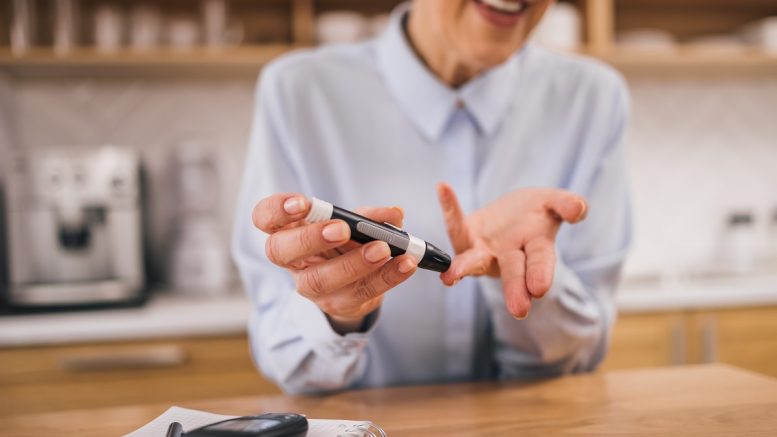According to a 2021 study by the UK based diabetes charity, the number of people in the UK living with diabetes has doubled in the preceding 15 years. A similar trend is seen worldwide, and recently prevalence has been rising more rapidly in low- and middle-income countries than in high-income countries.
It is therefore not surprising that the diabetes technology market is vast, with the global diabetes devices market estimated at USD 26.7 billion and forecast to hit USD 55.6 billion by 2030. The development of diabetes-related technology is happening rapidly, and the associated improvements in managing and treating the disease can save countless lives.
Brief History of Diabetes Tech
The history of diabetes care and therapy begins in the 1920s with the discovery of insulin. Since then, diabetes technology has evolved from basic syringes for injecting insulin, to the introduction of “closed-loop” systems that act as an artificial pancreas.
The first specialised insulin syringes were manufactured in the 1920s. These early devices tended to be bulky, and required a certain level of training before a patient could self-administer insulin. Innovation by companies such as Becton Dickinson and Novo Nordisk has since transformed insulin syringes into bespoke, one-piece devices with ultra-fine needles and improved safety features that enhance patient comfort and reduce dosing errors [1].
A landmark innovation in the field of diabetes technology was the insulin pen, first introduced in the 1980s. Insulin pens provide a simple and easy to use means for self-administering insulin. They typically include an insulin cartridge, and some form of dose-setting mechanism such as a dial. Their user-friendly design and simple dose-setting features has led to their widespread adoption.
Both insulin syringes and insulin pumps require the user to perform multiple injections per day. This can prove difficult for some users, which may lead to reduced treatment adherence. One insulin-delivery system that avoids this is an insulin pump. First developed in the 1970s, insulin pumps continuously infuse insulin in a manner that aims to mimic insulin secretion by the pancreas. Typically, the pump will administer a continual lower dose of insulin, and the user can trigger higher bolus doses prior to meals.
A vital aspect of diabetes care and management is the monitoring of blood glucose levels. It is essential that patients can measure their blood glucose level throughout the day, as this information is used to determine an appropriate insulin dose, and also enables early detection of potentially dangerous hyper- or hypoglycaemia. The development of small and easy-to-use blood glucometers suitable for home use in the 1980s marked a step-change in users’ ability to maintain stable blood glucose levels via self-administered insulin treatment. Further development in this field led to the introduction of Continuous Glucose Monitoring (CGM) devices. These devices continuously measure glucose concentration in the user’s interstitial fluid, and can achieve a time-resolution of between 1 and 5 minutes.
Current State of the Art
Recent advancements in the field of insulin pens include the introduction of so-called “smart pens”. These typically incorporate a memory and on-board computer that provides a means of recording and tracking the administration of doses over time. This development has had a significant impact on the treatment of diabetes in children. The memory function of insulin pens such as the NovoPen Echo, developed by Novo Nordisk, have proved popular as they allow data transfer to a computer in order to generate reports summarising the user’s dosing regimen. Other solutions include onboard calculators that can assist users in dose calculations based on input blood glucose values, and enhanced connectivity has enabled automated transmission of data to generate periodic treatment reports.
Where there are “smart pens”, there are also now “smart pumps”. These integrated devices are configured to receive data from a CGM device, and use the received blood glucose levels to automatically adjust the infused insulin dose. The MiniMed™ system marketed by Medtronic adjusts and corrects the delivery of insulin every 5 minutes based on wirelessly-transmitted CGM data, and claims to enable users to remain within their target blood-glucose range for at least 19 hours per day.
Another recent development does away with the infusion tubing of conventional insulin pumps altogether. Patch pumps are lightweight devices that are attached to the skin using adhesive and provide similar functionality to an insulin pump. The Omnipod DASH® marketed by Insulet Corporation provides a tubeless, wearable solution that communicates wirelessly with an accompanying Personal Diabetes Manager (PDM) to provide automated delivery of insulin therapy for 72 hours. The PDM communicates wirelessly with an integrated blood glucose monitoring device to manage the dose delivered in order to keep the user’s blood glucose level stable.
Future Trends for the Diabetes Tech Industry
What comes next? A good way of assessing future trends in the diabetes tech industry is to look at the patent landscape. A brief review of recent patent publications by some of the big players can shed light on where the next major advancements could be made.
A major theme that becomes immediately apparent when reviewing a selection of recently-published patents in the diabetes technology field is the wide-ranging impact that Artificial Intelligence (AI) will have on the industry over the next few years. An example of this is shown in Dexcom’s patent application published in August 2021 (WO 2021/167675 A1), titled “Machine Learning in an Artificial Pancreas”. The application describes various uses of machine learning to optimise control of a closed-loop “artificial pancreas” insulin pump device. One use-case described is the prediction of future required insulin doses based on historical data. The system predicts future insulin doses based on historical blood glucose level data and data describing the user’s activity levels, and food consumption. The system may also predict that a future bolus dose of insulin may be required based on contextual information indicating that the user is, for example, at a restaurant.
Another interesting, and non-AI, development is shown in Becton Dickinson’s application granted in 2021 (WO 2016/118736), that describes a module that can be attached to an existing injection device (such as an insulin pen) and detects the actuation of the dose setting dial by monitoring accelerometer data. The device determines whether a user has increased or decreased the set dose of the device by detecting the magnitude and direction of vibrations in the body of the device caused by the “clicking” of the dose dialling wheel.
The above examples are just a snapshot of the innovations that could be arriving in the coming months and years. They provide an indication of how improvements in neighbouring fields of technology such as AI and signal processing could have a significant impact on diabetes tech.
In a fast-moving industry such as this, protecting your company’s IP is especially important. However, obtaining patent protection in a field that straddles computer-implemented inventions and diagnostic/therapeutic methods can be especially challenging.
In Europe, for instance, computer software and methods of treatment/diagnosis performed on a human body are each excluded from patent protection, to the extent that the invention falls within these subject matter areas ‘as such’.
This can often create uncertainty and complexity for patent applicants and may result in inconsistent or unpredictable outcomes in patent applications. Patent-drafting, therefore, must be approached carefully by experienced practitioners who are aware of the potential pitfalls.
Forming interdisciplinary teams that comprise the relevant software and life sciences expertise is highly recommended. As is engaging with an experienced patent attorney early on in the invention-harvesting and/or patent drafting process.
Article by Dr Ben Hipwell, Associate at Reddie & Grose – a firm of UK and European patent, trade mark and design attorneys





